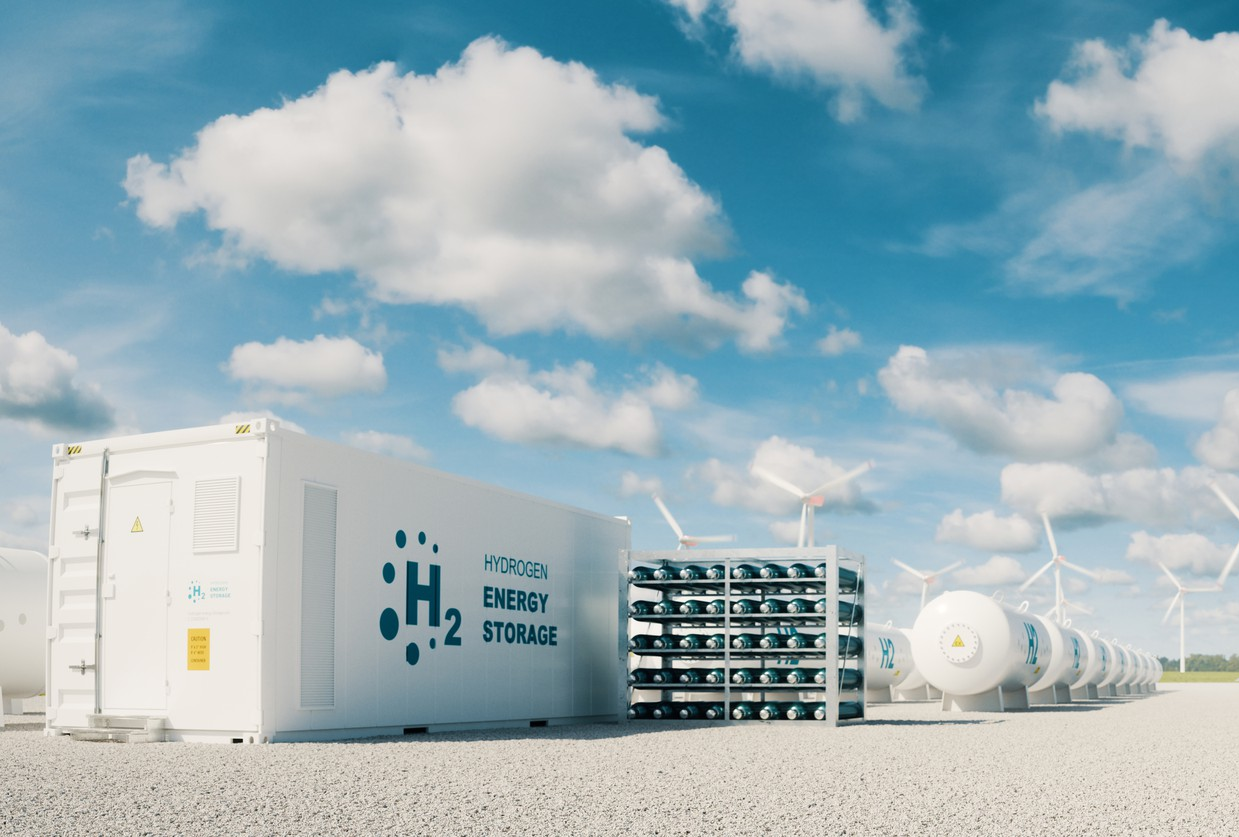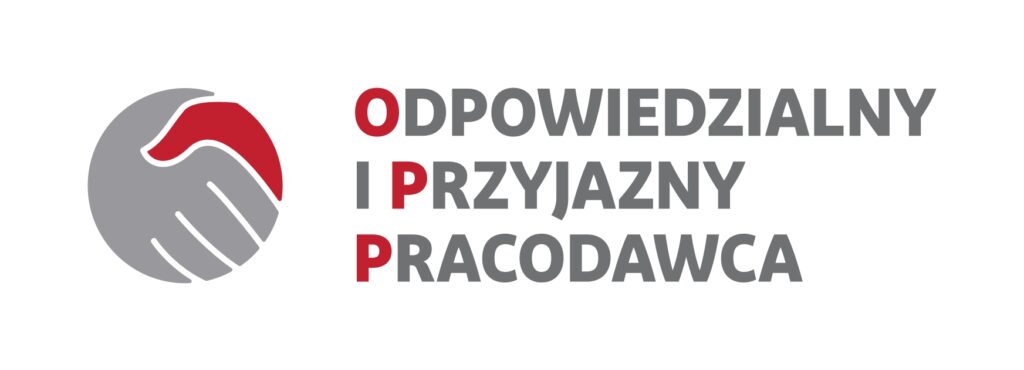Adam Rymut*
Świętokrzyskie Mines of Mineral Resources continues the traditions of the company which was founded in 1874 under the name of Kielce Marble Mines Company. In three years’ time, therefore, we will celebrate the 150th anniversary of our presence in the market of mining and selling stone products. From the first years of its existence, the company was engaged in the exploitation and sale of stone from both its own and leased quarries. Stone was obtained from mines in the vicinity of: Bolechowice, Morawica, Szewce, Ołowianka-Miedzianka, Zelejowa and Skrzelczyce. A significant task for the company, both between the wars and in the first post-war years, was the manufacture of “marble” accessories and slabs of polished stone which became known as Chęciny marble. Facades made of stone made by the predecessor of ŚKSM can be found in the Wawel Castle, the first building of the Warsaw Stock Exchange, or the National Library.
Also, the first Sigismund’s Column was made of stone quarried at ‘Zygmuntówka’ Mine (it probably received this name to commemorate the place from which the raw material for the construction of the Sigismund’s Column was obtained). This mine was part of the company whose traditions are continued by ŚKSM.
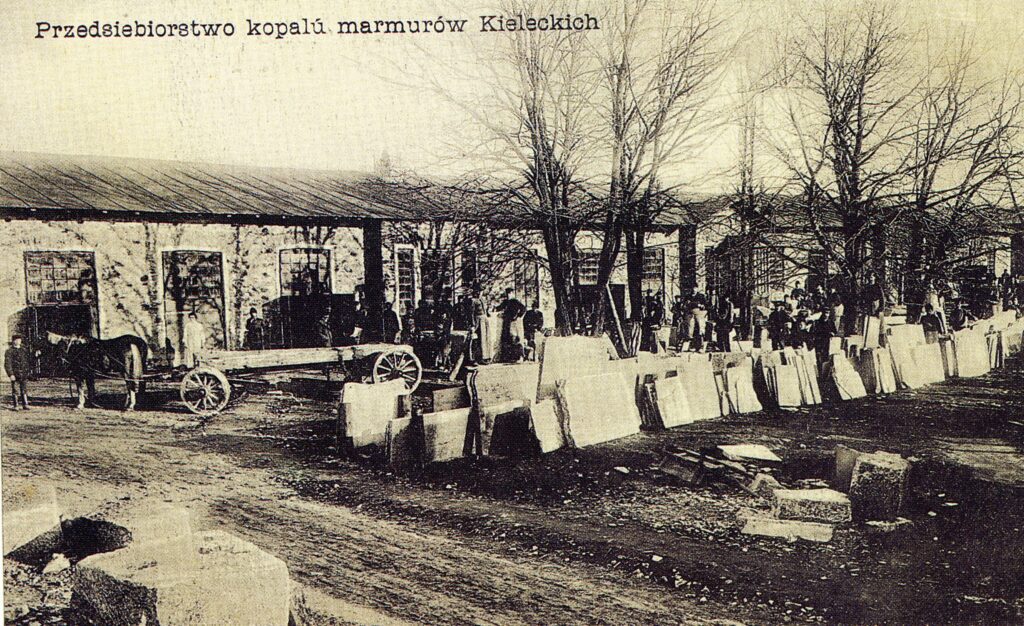

After the end of World War II, in 1946 the company was acquired from the previous owners by Zrzeszenie Pracowników Kieleckiego Przemysłu Marmurowego i Kamieniarskiego spółka z ograniczoną odpowiedzialnością – Fabryka Marmurów in Kielce (the Association of Employees of the Kielce Marble and Stoneware Industry LLC – Marble Factory in Kielce). In June 1946, the enterprise changed its name to Kielecki Przemysł Marmurowy i Budowlany – Spółka z ograniczoną odpowiedzialnością – Fabryka Marmurów w Kielcach (the Kielce Marble and Building Industry – LLC – Marble Factory in Kielce). From November 5, 1949 to March 8, 1958, the company was under compulsory state administration established by an order of the Minister of Light Industry. The popular Kielce Marbles was finally nationalized on February 1, 1964.
The plants have been operating under their current name since January 2016. The company consists of three dolomite mines: the Laskowa mine, the Jaźwica mine, the Winna mine near Łagów (in the so-called dolomite basin of the Świętokrzyskie province) and the now defunct Suków sand mine (under restoration).
Writing about our mines, it is necessary to mention the most interesting, forgotten mine, which was located in the western part of Zelejowa Mountain. It mined rock blocks peeled off with hand tools. The rock blocks obtained were transported to the stone processing plant located in the town of Chęciny on Kielecka Street.
After cutting and polishing, beautifully colored slabs of characteristic color were obtained, called Różanka Zelejowska or ‘Chęciny marble’. These slabs were used to line, among others, the chapel on Wawel Castle, the National Library, the Bishop’s Palace in Kielce, the Stock Exchange, religious buildings and many other public facilities. Some elements of the Karczówka chapel are made of this stone. Unfortunately, the mine existed only until the end of the 1950s and ceased to exist overnight, which came as a very big surprise to the employed workers.
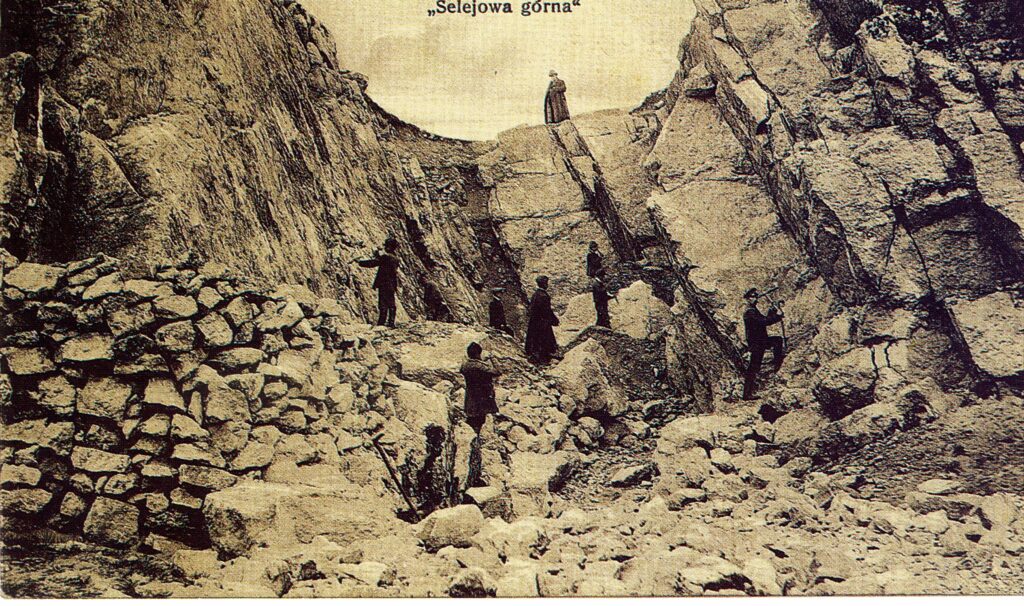
Another interesting mine, mainly from the mining point of view, was the Korzecko mine near Chęciny, which began operating after the Zelejowa mine was closed. Probably the only chamber blasting in this part of Poland took place there in 1965. The technology of this type of mining is complicated and risky, and consisted in hollowing out a gallery in Rzepka mountain from which two chambers were made. About 6.5 tons of explosives were deposited there (rock ammonites). The entrance was plugged. The detonation yielded about 80,000 t of limestone, which satisfied the production needs of 3 shifts for 6 months.
The mine existed until 1978, where it was returned to the municipality of Chęciny after reclamation of the pit and the area around the mine. The site of the excavation became the site of the European Center for Geological Education belonging to the University of Warsaw, where geology enthusiasts can learn about the history and story of our small homeland.
To most of our former mines, Bolechowice, Morawica, Szewce, Ołowianka-Miedzianka, Zelejowa and Skrzelczyce, which formed the history and traditions of the Świętokrzyskie land, there are wonderful didactic paths on which one can spend a pleasant time learning and relaxing.
As a result of the development of new construction and roads, stone processing and the manufacture of stone accessories, so characteristic of our company’s products, were gradually abandoned. New mines were opened, the Laskowa Mine, the Winna Mine and the current largest mine, the Jaźwica Mine, whose output, at 2,500,000m t/year, is one of the largest in the Świętokrzyskie region.
The exploitation of regional natural resources, which are represented by limestone, dolomite and sand, obliges us to take care of the environment in order to be the least burdensome neighbor and also to make the remains of mines that have already been closed available to the public for recreational and educational purposes. An example of such an activity can be our defunct Suków mine where recultivation in the area of water and forestry has been carried out, making available to the public a beautiful reservoir surrounded by pine forests where one can relax and not remember the significant human interference in the environment.
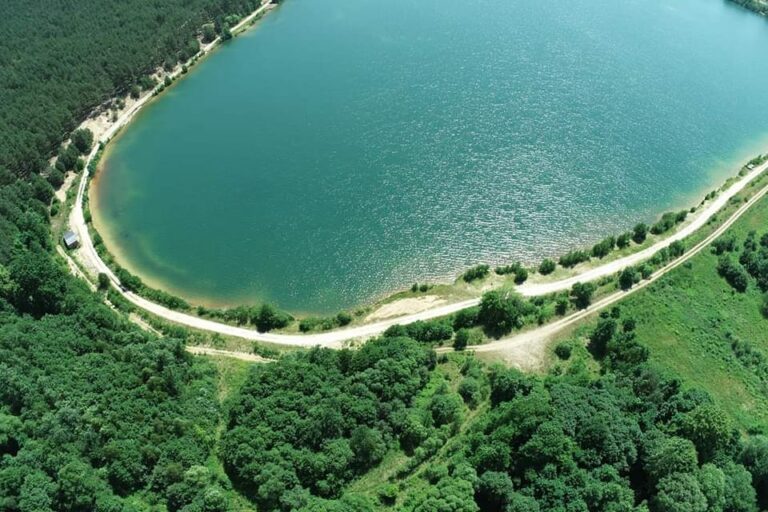
Choosing the right direction for restoration, its proper design and execution guarantees success and user satisfaction. It may be exemplified by the nationally known amphitheatre at Kadzielnia, which not everyone knows was made in a former mining pit. You can visit the caves made accessible, walk along educational paths and admire from the observation deck the emerald-coloured lake, whose water level changes depending on the season.
Equally interesting form of restoration is the creation of an educational site at the place of the exploited mine that can serve children and young people to learn about the history of the earth. The educational direction and the creation of Geopark Kielce on the site of the former Wietrznia mine allows to admire karst phenomena and tectonic changes, mineralization processes that took place hundreds of millions of years ago. The establishment of the Wietrznia Reserve allows us to hope that this place will also be visited and admired by future generations. Small mining pits such as the Szewce mine, which was closed in the 1960s after being discovered near the ‘Raj’ Cave, are being restored with a view to bringing the area back to the local community, with sports fields and meeting places being built there. Most of these inactive mining pits are connected by educational paths, allowing visitors to learn about the history of the region, where a distinctive feature of the landscape is the oldest mountains in Europe – the Holy Cross Mountains.
The current incredible development of the company, taking care of ecology, introducing new solutions to improve the environment, takes place with the great support of the owner – the Industrial Development Agency – and the staff.
*Adam Rymut – is a chief foreman in ŚKSM (a person of higher supervision of the mining specialty movement), has been working in the company since 2008.
